#located in eastern Ukraine
Explore tagged Tumblr posts
Text
Ukraine is attempting to kill Putin
Ukraine is developing a missile capable of potentially killing Vladimir Putin. As the conflict enters its third year, Yehor Chernev, head of Ukraine’s NATO delegation, recently revealed that the Hrim-2 missile is nearly operational. Believe me, there will soon be concrete results that not only Ukraine but also the Russian Federation will see The Hrim-2 is a single-stage, solid-fuel ballistic…
#especially as Western countries continue to prohibit Ukraine from using their weapons to strike targets within Russia. Currently#head of Ukraine’s NATO delegation#located in eastern Ukraine#primarily aiming at ammunition depots and fuel storage sites.#Putin#recently revealed that the Hrim-2 missile is nearly operational. Believe me#solid-fuel ballistic missile capable of carrying a 500 kg warhead over a range of up to 500 km. This new weapon represents a significant tec#the Tochka—a relic from the Soviet era. The Dnipro-based company KB Pivdenne has been developing this missile for the past decade. Despite o#there will soon be concrete results that not only Ukraine but also the Russian Federation will see The Hrim-2 is a single-stage#Ukraine#Ukraine can strike Russian targets using drones#Ukraine is developing a missile capable of potentially killing Vladimir Putin. As the conflict enters its third year#Ukrainian engineers have managed to continue their work. Volodymyr Zelenskyy announced a successful initial test of the missile last August.#which has so far relied on its best available missile#Yehor Chernev
3 notes
·
View notes
Text
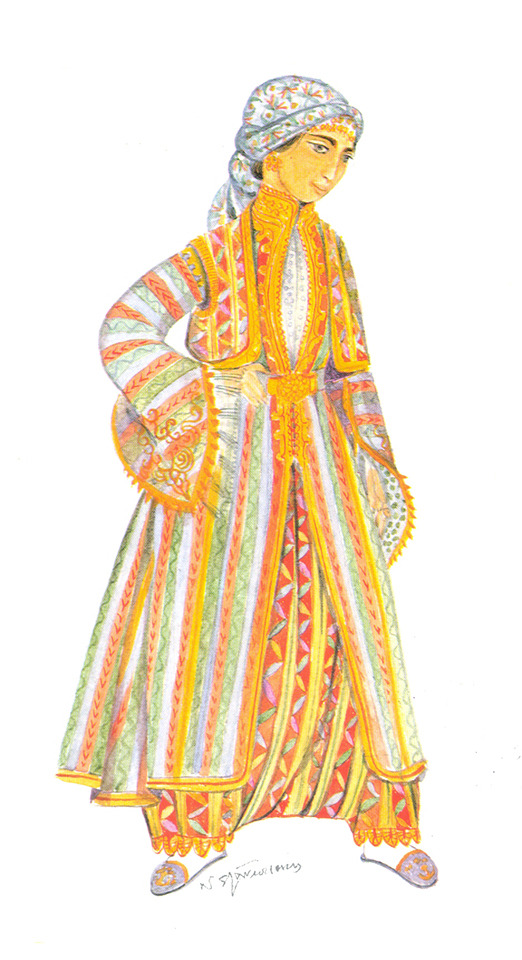

Traditional Romaniote Jewish costumes from Ioannina, Greece. 1936, by Nikos Stavroulakis.
The Romaniotes are the oldest Jewish community in Europe, speaking a distinct language known as Yevanic, a Greek dialect infused with Hebrew, Aramaic and Turkish words. They derived their name from the endonym Rhomania (Ῥωμανία), which refers to the Eastern Roman Empire. Thriving Romaniote communities were located all over the Balkans and Anatolia, as well as parts of modern-day Italy, Hungary, Armenia, Romania and Ukraine. Almost completely exterminated during World War II, the Romaniotes still have functioning synagogues in some Greek cities.
592 notes
·
View notes
Text
Get ready with me to be surprised with
✨️Anya's Origin✨️
Hint: Romania
I had some free time, so I reread the latest chapter of Spy x Family, chapter 92.


Barbara said she and Sigmund were in Covenia for awhile. We know Westalis and Ostania are a reference for the West Germany and Eastern Germany, so I wondered if Covenia is based on a real place too. I was bored, y'see.
I quick-searched a country name that ended with -nia, but no luck.
I remembered a theory that Anya is more superior in Classical languange because she might've come from a place that uses that languange. A wild idea popped up to me that Covenia still uses (or references) that language. Since Sigmund has many classical books, it's not a stretch to assume he learned that language because he used to live in Covenia. Based on that assumption, I searched what country is still using Latin languange, what languange that references Latin.
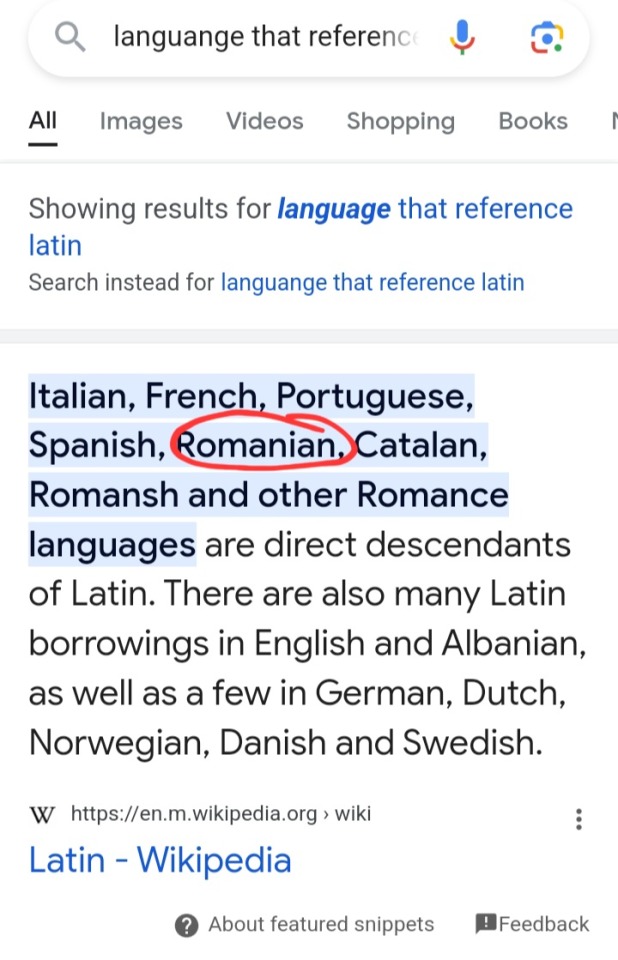
... bingo.
Covenia and Romania. Who would've thought.
I searched where is Romania located because my geography sucks.
Oh it's in Europe, great! And it's close with Ukraine too, Russia...
Wait. I thought the story is based in the '60s, so, could they be related at that time?
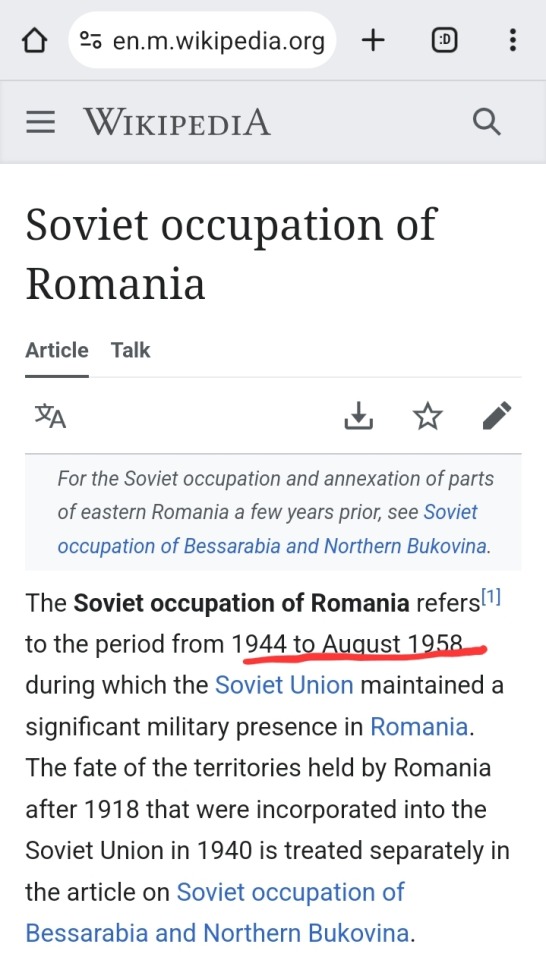
Wow, so they ARE related.
And the timeline matched with SxF's world too.
When I clicked the "Romania" word, I stumbled on this.
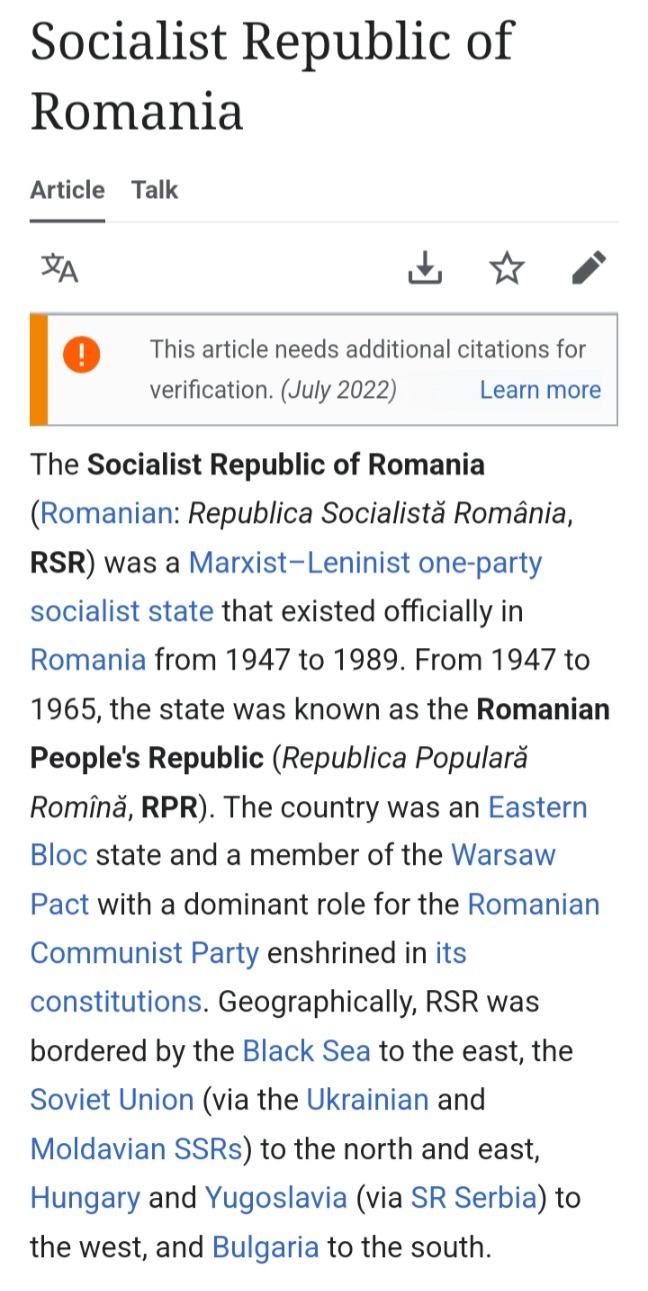
.....
Could it be,
Anya originally comes from Covenia, which is a reference to Romanian People's Republic?
Does it mean the organization that experiment on Anya is based in Soviet?
And to think that Sigmund, a well-known neurology professor, used to rehabilitate wounded soldiers in Covenia... Is it really a rehabilitation though?
*cold sweat*
Anyways.
If Anya really comes from Covenia/Romania, the initial spelling of her name would make sense then, but I have zero idea about Romanian alphabet to confirm it.
Of course I searched it.
The Romanian alphabet is a variant of the Latin alphabet used for writing the Romanian language. It is a modification of the classical Latin alphabet and consists of 31 letters, five of which (Ă, Â, Î, Ș, and Ț) have been modified from their Latin originals for the phonetic requirements of the language
Oh shoot it's getting warmer.
Double check to make sure, I tried to look if [î] is really the replacement alphabet for [y].
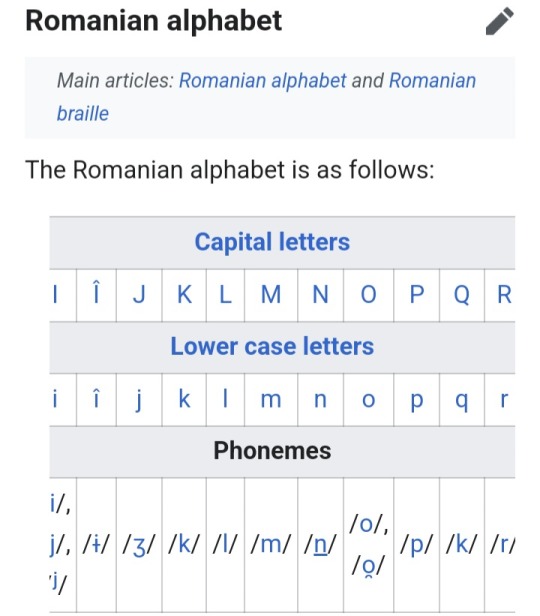
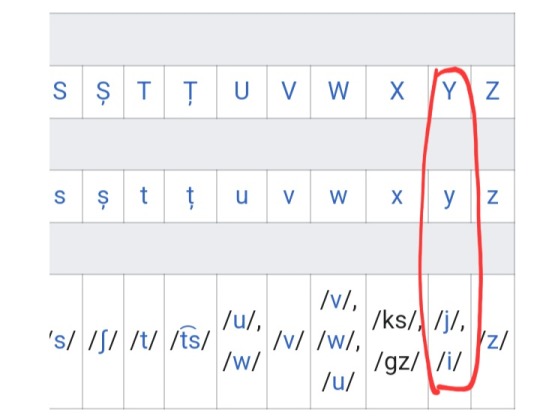
OH SHIT.
K, Q, W and Y, not part of the native alphabet, were officially introduced in the Romanian alphabet in 1982.
Now it makes sense. No wonder Anya spelled her name like that.

It's because in the place where she came from, the alphabet Y wasn't used yet. And it's not supposed to be Ania either; it's Anîa. But I doubt a small child like her would understand the difference between i and î.
Summary:
Anya might've come from Covenia/Romania. It explains her initial name and her excellence in Classical language.
The organization that experimented on Anya might've come from the Soviet.
Sigmund might have some connections with Anya more than we thought; the theories were right on track. Because he studies neurology and lived in Covenia for some time, he is fluid in Classical languange and he knows how to make learning more fun.
I wanted to try searching what kind of brain-related research did Soviet do at that time, but then I might come up with lobotomy or some dark shit and I'm not prepared for that, so I'm gonna let the sleeping dogs lie until we get more informations from Endo.
Annd that's it. I'm very surprised with this finding. My quick 5-minutes search turned into 2-hours brainrot. And my hands are still cold. I'm not sure if it's intentional from Endo or it's just some happy coincidence, but at least I'm more aware with Covenia now.
Thank you for following me in this short journey! Byee 👋
#spy x family#spy x family spoilers#spy x family manga#spy x family theory#spy x family 92#sxf#sxf spoilers#sxf manga#sxf theory#sxf 92#anya forger#anya forger theory#anya comes from romania theory
616 notes
·
View notes
Text
To all those who died alone in the Russian occupation
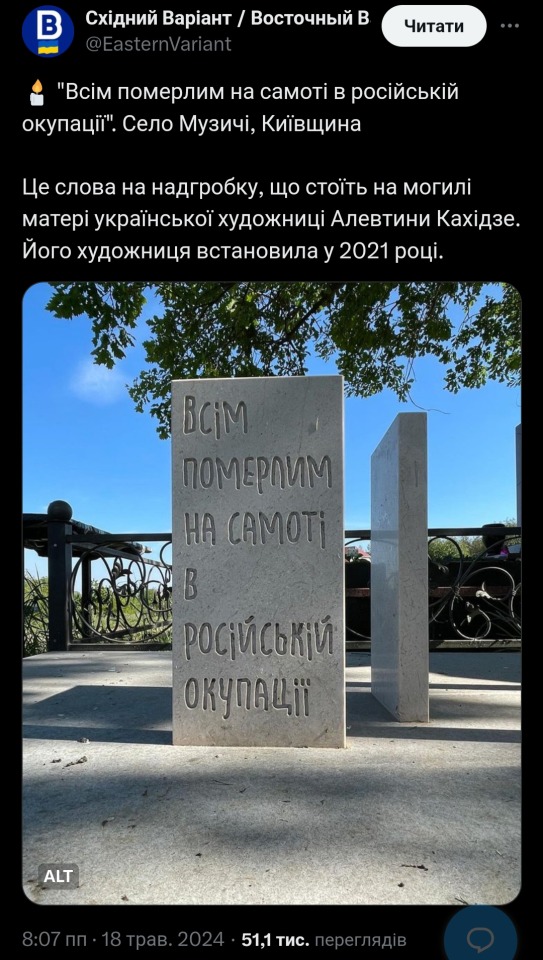
🕯 "To all those who died alone in the Russian occupation". Muzychi village, Kyiv region
These are the words on the tombstone that stands on the grave of the mother of Ukrainian artist Alevtina Kakhidze. The artist installed it in 2021. This memorial project consists of six marble doors that replicate the location of the doors in the house of Alevtina's mother, known as Klyubnyka Andriivna, in the village of Zhdanivka, Donetsk region, as well as concrete porch steps recreated in real life. When the war in eastern Ukraine broke out, the artist's mother was unable to leave her home despite her daughter's persuasion. Alevtina dedicated a series of works to her mother, which were shown at exhibitions in Ukraine and abroad. Kakhidze's mother died in 2019 - her heart stopped while crossing one of the checkpoints controlled by the militants of the so-called "Donetsk People's Republic". She was buried in the Kyiv region.
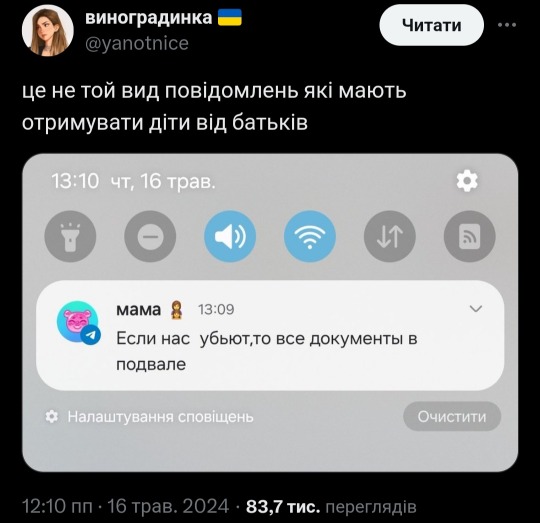
This is not the kind of message that children should receive from their parents "If we are killed, all the documents are in the basement."
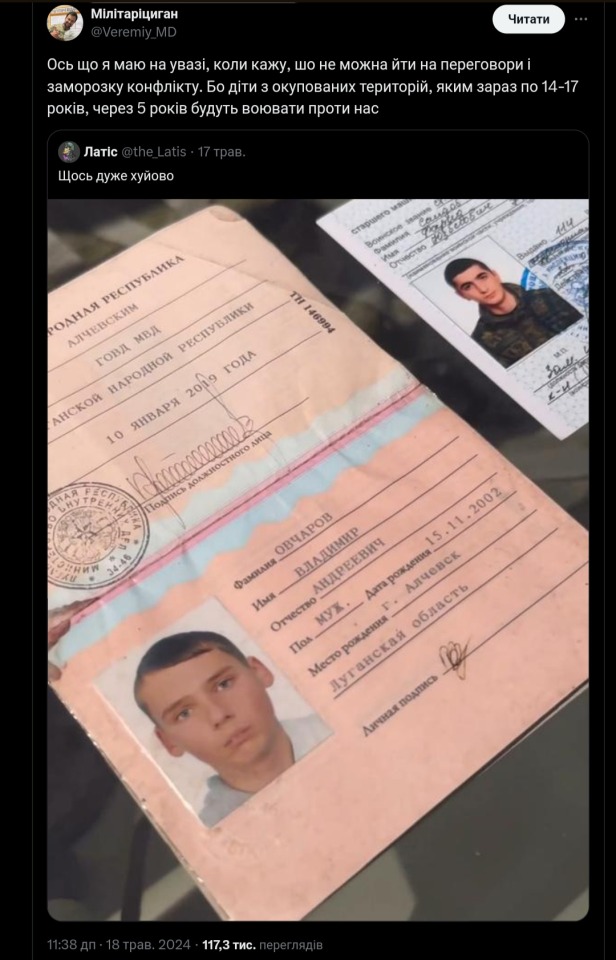
This is what I mean when I say that we cannot negotiate and freeze the conflict. Because children from the occupied territories, who are now 14-17 years old, will be fighting against us in five years.
Don't be indifferent. Make Russia pay. Please hear our cry out to the world, keep spreading our voices, and donate to our army and combat medics (savelife.in.ua, prytulafoundation.org, Serhii Sternenko, hospitallers.life, ptahy.vidchui.org, and u24.gov.ua).
#ukraine#russia#russia is a terrorist state#russia must burn#russian invasion of ukraine#russo ukrainian war#genocide#stop the genocide#war in ukraine#russian war crimes#war crimes#world#europe#stand with ukraine#arm ukraine#important#signal boost#twitter#loss#donations#donate if you can#please donate#support ukraine#support#history#russian imperialism#russian propaganda#український тамблер#український tumblr
366 notes
·
View notes
Photo
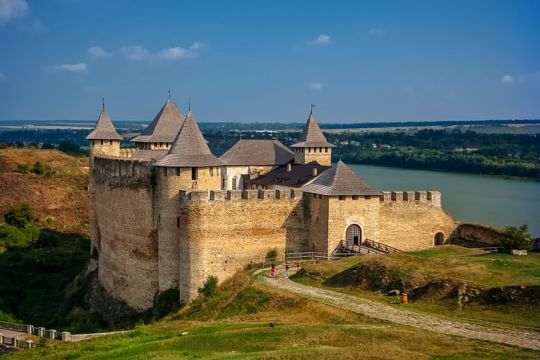
Khotyn Fortress
Khotyn fortress is a complex of fortifications situated on the hilly right bank of the Dniester in Khotyn, Ukraine. It consists of a 13th-century stronghold and an 18th-century bastion surrounding it. It is one of the oldest preserved fortifications of Eastern Europe.
The Medieval Fortress
There is no information in written sources about the construction date of the first fortifications at this place, but archaeological excavations in the 1960s discovered the remains of an early fortified structure. The first castle had wooden walls and earth ramparts, and it was possibly constructed in the early 11th century by the Grand Prince of Kyiv Vladimir the Great (l. c. 958-1015), who conquered the area around that time and wanted to control the river crossing and gain access to a major trade route.
In 1199, the city and the fortress became part of the Galicia-Volhynia Principality, which used the fortress on the banks of the Dniester, then the border of the principality, to defend the frontier. In the middle of the 13th century, Daniel I of Galicia (l. 1201-1264), King of Ruthenia (formerly Galicia-Volhynia), reinforced the stronghold by replacing the wooden fortifications with stone ones.
With the economic crisis of the 14th century in Europe, Genoa sought new income sources. Such an income stream was the Black Sea Basin, which includes the Dniester, as these lands were abundant in agricultural resources. Thus, by the first half of the 14th century, the Genoese created a trade network all across the Danube, the Dniester, the Sea of Azov, and Crimea. Considering the weakness of the Kingdom of Ruthenia in the early 14th century, the Genoese were able to take over the Dniester trade route, and the Khotyn stronghold became a remote outpost defending the trade network.
With the foundation of the Principality of Moldavia in the mid-14th century, under the rule of Dragoș the Founder (d. 1353), the vassal of the Kingdom of Hungary, all the fortifications and trade posts on the Dniester, including Khotyn, came under the rule of Moldavia. In the 15th century, the stronghold was significantly rebuilt and became the residence of the local governor.
In the second half of the 15th century, the Ottoman Empire wanted to conquer Southern Bessarabia and was afraid of the strategic location of the Principality of Moldavia. In 1473, Moldavia refused to pay its annual tribute to the Ottoman Empire, and so Mehmed II the Conqueror (r. 1451-1481) invaded Moldavia in 1474. In 1476, his army reached Khotyn, but the fortress proved impregnable, and the siege was unsuccessful.
Continue reading...
32 notes
·
View notes
Note
well let me start off by saying that neither ww1 nor ww2 were actually called that during their durations so expecting any country leader to stand up and say "hey this is ww3 right here" is non-sentical, it would be a career suicide (in the reasonable parts of the world anyway, not USA). The image of ww3 is almost universally used as fearmongering and announcing it at any official capacity would send the world into panic mode, which is very counterproductive to any party.
Notice how any currently ongoing grab for land (by which I'll be further meaning Russian invasion into Ukraine, genocide in Gaza and Azerbaijan occupation of Artsakh though I'm sure there are more things I'm not fully in touch with) explicitly avoids being called war as well. They're always reclamation that, special military operation this. This is entirely intentional because nobody wants a fucking war but minds a military operation.
That aside now think about the ongoing issues too. War in Ukraine, Ukrainian side is supplied by the western powers/NATO, Russian side is supplied by Iran, North Korea, China. This is basically repeating the lineup of the cold war with some adjustments with Ukraine as a testing ground for weapons. But we'll have to examine that further than just Putin loosing his marbles at long last because this is a part of a long lived imperialist pipe dream of restoring USSR/Russian Empire; it is geopolitically motivated at the top levels and xenophobically at the low levels. Not that Putin and his underlings don't believe Ukrainians are lesser people, they just don't care about that as much as they care about conquering the parts of Ukraine that are the most resource lucrative - the eastern coal, steel and previous stone mines, the southern parts with open access to black sea, famously lucrative Ukrainian agrarian regions. They already profit off it so this is neither simply political agenda nor a blatant cash grab, it's both a fascist, imperialist ideology combined with a land grab rush. Which they are winning.
And if we look into Armenia vs Azerbaijan situation then you'd notice it looks very similar. Azerbaijan #1 ride or die ally is Turkey, and Armenia is located very inconveniently in geopolitical terms, nevermind the fact that it has already suffered a genocide and had land taken. It's common knowledge that Turkey also has a pipe dream of restoring the Ottoman Empire. Source: 1) they tell on themselves constantly if you pay attention 2) the entire invasion of Cyprus for no fucking reason in 20th century 3) the tongue-in-cheek diplomacy with Greece for ages. Both Armenia and Azerbaijan were once part of the Ottoman Empire, and while it is doubtful that Azerbaijan would officially join Turkey provided an opportunity, they're close allies to the point where things like borders don't really matter (Russia and Belarus are similar, though there actually was an attempt to unite them legally that kinda fell through). But Turkey is in NATO and is posing as an overall Good Guy so Erdogan would never actually put his act where his mouth and ideas is. Now "tiny irrelevant" Azerbaijan, supplied by Turkic weaponry (which is nothing to scoff at - they do supply NATO fyi)? Easy. And there we have another ethnic cleansing and an open intend to go whole way.
Now some were suprised by Russia standing aside in Artsakh when they were supposed to help their ally but you can't miss out on the context that Armenia was never a full hearted ally of Russia and was basically forced to join the alliance out of fear of eradication, and Russian troops were actually on site of Artsakh helping the Azeri side. This has not come as a surprise to Armenians who were wholly aware of their political situation, because we need to keep in mind that Putin is friends with Erdogan (because he helped negotiate the Black Sea routes with Putin - remember that?), and by extension is married to the "let's restore the Ottoman Empire" imperialist dream. It holds little threat to him because one, Erdogan owes Russia in both economy and help with Artsakh, and two, Russia does still have more military power than Turkey has.
Putin's hand and approval partially guided the invasion in Artsakh and fully guides the war in Ukraine, he is also on good terms with Netanyahu, Israeli soldiers in Gaza use Russian's handbook on propaganda and public relationships. Also China is supplying Russia and North Korea, so there's also that. Also Russian presence in Africa, forgot to mention that. On the "western" side we have America and other NATO members supplying Ukraine, Belarus is so fully immersed into Russia people forget it's a state, Poland and Baltics all but openly stating they're preparing for invasion in case Ukraine loses and ceases to exist - which is will, and sooner rather than later. What's in it for USA? Land and money, mostly tbh. It's not about defeating Putin, it never was (Trump fucking loves him but nothing will stop him from switching up when Putin inevitably attacks Poland/Finland/etc as he has already stated he intends to), but trapping already broke eastern Europe in even more unpayable debt which they will be forced to pay off in labor and resources, as well as some ideological boost of morale? Please.
Empires' dick measuring contest, doesn't that remind you of anything? It will be more complicated than both of the previous world wars because we also have late stage capitalism and propaganda machines unlike anything humanity has ever seen before, but structurally, it will be more reminiscent of ww1 than ww2.
We don't call it WW3 despite how many countries are involved politically and financially *yet* because nothing has so far happened on American or Western European soil nor have either started a draft, but I think it's fairly safe to say we're in the beginning years of one, think 1939, especially with a fascist government rising to power in USA. So my answer is yes, ww3 full swing in the following 10 years is almost guaranteed, but we're kind of already in one in everything but name.
That said, I might be biased, seeing as I am Ukrainian.
thanks for sharing your thoughts. honestly this is out of my wheelhouse as I'm slowly understanding more and more geopolitics but I appreciate you explaining your perspective and it's valuable to hear from a Ukrainian sister. wishing you nothing but the best
45 notes
·
View notes
Text
International Holocaust Remembrance Day 2025
Monday, January 27th, is the 80th anniversary of the liberation of Auschwitz, the largest Nazi concentration and death camp located in Poland. On this day in 1945, Soviet troops from the 60th Army of the First Ukrainian Front opened the gates of Auschwitz and witnessed the horrors that had occurred there.
Memorial Day commemorates the victims of the Holocaust, during which one-third of the Jewish population—six million Jews—along with millions of others, were murdered by the Nazis, and victims of other genocides. This is a significant commemorative event held at the former concentration camp on International Holocaust Remembrance Day. This site was established by Nazi Germany in occupied Poland during World War II.
The music of Schindler’s List, composed by John Williams, is made unforgettable by Itzhak Perlman’s violin. Born in Tel Aviv in 1945, Perlman was already a renowned musician when, at the age of 48, he performed the iconic violin solos for the 1993 soundtrack. The theme music from Schindler's List by John Williams is often played on Holocaust Memorial Day and Remembrance Day.
This memory must be passed on to future generations. For the dead and the living, we must bear witness. We remember and we must never forget.
Never again! 🕯️
#InternationalHolocaust #RemembranceDay #80thanniversary #liberationAuschwitzBirkenau #schindlerslisttheme #johnwilliamsmusic #storybehindthemusic #HolocaustMemorialDay #Filmsguild #Schindler'sList #ItzhakPerlman #LiamNeeson #NeverForget #NeverAgain#WWII
🎥 Schindler’s List
Posted 27th January 2025

@ aria-diary This is not forgotten because was part of the Generalplan Ost - GPO (General Plan East), a plan devised by Nazi leaders in 1941--1942 to resettle Eastern Europe with Germans, and move "inferior" groups within the Nazis' domain.
Nazi Germany's plan for extermination and large-scale ethnic cleansing of Eastern European Jews, Slavs, and other peoples of Eastern Europe categorised as "Untermenschen" (refer non-Aryan people they deemed as inferior) Nazi ideology - was mainly used against "the masses from the East", that is Jews, Roma, and Slavs (mainly ethnic Poles, Belarusians, Czechs, Ukrainians, Russians and Serbs). The territories involved included the occupied Poland, the Baltic states (Lithuania, Latvia, and Estonia), Belorussia, and parts of Russia and Ukraine.
During the war, many of the Nazis' activities were carried out with General Plan Ost in mind. They massacred millions of Jews in Eastern Europe,in addition to millions of Soviet prisoners of war. Millions more were sent to Germany to do forced labour.

The United Nations General Assembly Resolution 60/7, passed in 2005, designated January 27th as the International Day of Commemoration in memory of the victims of the Holocaust.
This date marks the anniversary of the liberation of Auschwitz-Birkenau, where more than 7,000 prisoners were freed. It is estimated that approximately 1.1 million people perished at Auschwitz during its five years of operation.

The notorious “arbeit macht frei” "work makes you free" sign at Auschwitz
@ aria-diary, I understand your concern. The Holocaust is referred to as the Shoah in Hebrew. (Shoah “calamity” is the term that is preferred by the Jewish community, because ”Holocaust” means “sacrifice by fire”) the systematic murder of millions of Jews by the Nazi regime and their allies during World War II. This plan was known to the Nazis as "The Final Solution to the Jewish Problem" and took place between 1941 and 1945. The Final Solution marked the tragic culmination of the Holocaust.
Auschwitz's liberation is significant because it was the centre of the Nazi campaign to eradicate Europe's Jewish population through extermination camps, whose primary purpose was the mass murder of Jews. Nearly one million of those who perished there were killed by poison gas and their bodies were incinerated in crematoria. The Jewish people were the largest group persecuted by the Nazis, targeted based on racial and political grounds.
There were prisoners in Auschwitz from almost every country in Europe They included Albanians, Belgians, Danes, Dutch, Greeks, Hungarians, Italians, Latvians, Lithuanians, Luxembourgers, Norwegians, Romanians, Slovaks, Spaniards, and Swiss, also died there and were targeted for different reasons.
80 years after the liberation of Auschwitz, the full impact of these events is still not completely understood. The post-war public often seeks to move on from the trauma of war, and the media tends to favour stories that can be celebrated. However, it is essential to remember the Holocaust context "Not forgiving Not forgetting." This serves as a way to honour and remember the victims of the Holocaust.
44 notes
·
View notes
Text
Six months into the Russian occupation of the Ukrainian city of Kherson, in September 2022, the director of Liza Batsura’s college arrived at the dormitory where Batsura lived and told the students to pack up their things: They were going to Crimea. If the students refused, they would be put in the basement, Batsura said, speaking through a translator. The director gave no further explanation.
The next evening, they were taken to a camp called “Friendship” in Crimea, which was occupied by Russia in 2014. Although she couldn’t have known it at the time, Batsura—now 16 years old—was one of almost 20,000 children the Ukrainian government estimates have been deported or forcibly displaced to Russia. Only 388 have been returned.
Initially, the prospect of a couple of weeks by the sea didn’t sound so bad. But Batsura quickly began to realize that that wouldn’t be the case. The food was terrible, the days were long, and the children were pressured to sing Russian songs, including the national anthem, which made her very uncomfortable.
Foreign Policy is unable to independently verify Batsura’s account, but her experience closely tracks with the findings of investigations by the United Nations as well as researchers at Yale School of Public Health and other human rights groups who have documented a “systematic�� effort to relocate and reeducate thousands of Ukrainian children over the course of the war. She also recounted her story to Reuters as part of an extensive investigation into the deportations.
Batsura was one of five Ukrainian teenagers who visited Washington last month with representatives of Save Ukraine, a Ukraine-based nonprofit that helps to rescue Ukrainian children from Russia and the territories it occupies. They stoically recounted the stories of their abductions again and again for journalists, members of Congress, and attendees at public events.
It was the group’s first visit to Washington. Batsura felt like she was in a movie, she said.
With long limbs and round cheeks, the teenagers filed into the conference room of a Washington-based nonprofit with their minders from Save Ukraine for an interview with Foreign Policy. Once the Wi-Fi password had been secured and the bathroom located, they began to tell their stories.
They were teenagers like any other you’d see hanging out with friends at a cafe or shopping mall. Yet they were also victims of Moscow’s large-scale deportation of Ukrainian children—a potential war crime and the reason that the International Criminal Court (ICC) issued arrest warrants for Russian President Vladimir Putin and the country’s children’s rights commissioner, Maria Lvova-Belova, in March 2023.
Like Batsura, they all hail from regions of eastern Ukraine that were quickly occupied by Russian forces in the early days of the war. They recount being coerced or forced, sometimes at gunpoint, to go with Russian forces, and they were taken to schools and summer camps where they were held for several months and faced pressure to accept Russian citizenship.
In many instances, Ukraine’s most vulnerable children have borne the brunt of Russian deportation. Before the war, Ukraine had one of the highest rates of child institutionalization in Europe, with more than 100,000 children living in residential institutions. The vast majority have living parents but were placed in institutions because of poverty, difficult family circumstances, or because the child had a disability, according to Human Rights Watch.
The deportations have been carried out in plain sight. Early in the war, Putin signed a decree making it easier for Ukrainian children to be adopted and to be given Russian citizenship. Lvova-Belova herself claims to have adopted a teenager from the besieged Ukrainian city of Mariupol, and she has spoken publicly about her efforts to Russify him. In November, a BBC investigation found that a 2-year old girl who went missing from a children’s home in Kherson when she was just 10 months old had been adopted by 70-year-old member of the Russian parliament, Sergey Mironov.
Lvova-Belova has made a number of visits to institutions holding Ukrainian children, including to a college in the occupied Ukrainian city of Henichesk, where Batsura had been transferred from Crimea and placed in a culinary arts program.
The dormitory where Batsura was placed was freezing cold at night, she said, and the teenagers were forbidden to close the doors to their rooms. Russian troops patrolled the halls.
Lvova-Belova offered the children 100,000 rubles, roughly $1,000, and the opportunity to study at a college in Russia on the condition that they remain there. Batsura refused. Officials tried to find her a foster family, and she feared she would be sent to a remote region of Russia and would never be able to return to Ukraine.
For eight months while she was in Russian custody, Batsura had been unable to contact her mother, but she learned through a friend that her mother was working with Save Ukraine and applying for a passport so that she could travel to Russia and collect her.
With the border to Russia closed since the invasion, families face a daunting overland journey through wartime Ukraine, traveling into Poland, Belarus, and then Russia and—in Batsura’s case—down into occupied Ukrainian territory.
In some instances, children are turned over to their relatives without too much difficulty once the family members arrive to collect them, but the Russian authorities have also been known to present obstacles, said Olha Yerokhina, a spokesperson for Save Ukraine. The organization has helped families retrieve 240 children to date.
Officials at the school told Batsura that the journey was too arduous and that her friend was giving her false hope that her mother would ever arrive. “I didn’t believe them, and I kept telling myself that ‘No, my mom can do it, my mom will come,’” she said.
In May 2023, Batsura was rescued by her mother and now lives with her in Kyiv, where she is working with psychologists to process her experience. She is back in school and describes her hobbies as writing poems and making TikTok videos.
I asked her, given the atrocities that Putin has been accused of committing in Ukraine and during his presidency, how she felt about the fact that it was experiences like hers that had led the ICC to issue an arrest warrant for the Russian leader.
Yerokhina, who acted as our translator, interrupted to say that because she was rescued after the court order was issued, Batsura had likely missed the news about the ICC arrest warrant.
After Yerokhina explained the court’s decision, Batsura said, “It’s just.”
149 notes
·
View notes
Text
Illia Ponomarenko shows us one of the many gems Kyiv has to offer: The Kyiv Pechersk Lavra (or the Kyiv Lavra of the Caves). It is considered the most significant and holiest of places in Eastern Slavic Orthodox Christianity. This is an example of what is at stake for Ukraine as Russia continues its efforts to eradicate Ukrainian history and identity.
So, about 1,000 years ago, Kyiv was living its golden age as the center of a large medieval kingdom of Rus under Prince Yaroslav the Wise—very possibly the greatest ruler of Kyiv ever. The official residence of the rulers of Kyiv Rus was located in the town of Berestove outside Kyiv (it's now where Kyiv's Park of Eternal Glory is). The Berestove priest Illarion sought comfort and solitude, so he dug a lonesome cave in the hills at the Dnipro riverside, where he could spend his time alone in prayers. That happened around 1051 A.D. That guy soon became the head of the Kyiv Church and left, but more hermits followed his suit and established their shelters in those caves. Over many years, they burrowed long mazes of catacombs and established churches and monastic cells. The monastery gradually became a grandiose Lavra, a magnificent center of religious and cultural life, the greatest in this corner of human civilization. As early as 1073 A.D., the Cathedral of the Dormition (or the 'Great Church') was established (and you can see the modern iteration of it, the magnificent white cathedral bearing images of the saints on its walls. Just like Kyiv, the Lavra was ruined and resurrected from ashes several times over its 1,000-year history. Mongolians seized and desolated Kyiv in 1240, and the Lavra was devastated so hard that it spent well over a century in empty ruins. Yet, it would always rise again in all of its glory. During WWII, the Great Church was blown up just as many other iconic locations of Kyiv, such as Kherschatyk Street (in my opinion, what happened was that the Soviets planted bombs at the Lavra upon their withdrawal from the city in 1941 and failed to detonate them on time; and Nazis took out the treasures of the Lavra and got rid of the Soviet bombs by blowing up the cathedral. Like many other significant treasures of Kyiv, the Great Church of the Lavra was resurrected by independent Ukraine by the 2000s. The Lavra is indeed a city within a city—I'm only showing you a tiny part of it that is popular with tourists. Unfortunately, the ancient monastery caves have been closed to visitors for over a year. Technically, the Lavra is a giant museum with many art exhibitions, collections of historical artifacts, and recreation zones for anyone. Right now, for instance, the Lavra Historical Museum exhibits ancient Scthyntian gold from Crimea that was recently returned to Ukraine. At the Lavra, you can easily find the resting places of many historical figures of the past, such as the one of Kostiantyn Ostrozky, the legendary ultra-rich magnate of the 15th and 16th centuries and the Lavra's lavish sponsor, or Petr Stolypin, the Russian imperial prime minister who was assassinated at the Kyiv Opera House in 1911. Of course, the Lavra is about the iconic Great Bell Tower, one of Kyiv's most legendary landmarks. The tower is 96 meters high and can be seen from around 30 kilometers away from the Lavra. It takes over 370 stairs to reach the tower's top -- but I'm telling you, it's 100% worth it as the Great Bell Tower shows you a truly stunning view of Kyiv, especially when the weather is fine. Fucking legend. For centuries, until recently, the Lavra was under complete control by the Russian Orthodox Church, which is fundamentally loyal to Russia. In 2023, amid the war against Russia, Kyiv authorities and the Zelensky administration tried (and failed) to terminate the Moscow clergy's legal presence at the Lavra in 2023. Currently, the Russian church and its monks remain in control of the so-called Lower Lavra. In the Upper Lavra, which has most of the iconic places and locations, the recently re-established Orthodox Church of Ukraine, the de-facto successor of the old original Christian church of the Kyiv Rus, now has its divine service again. Welcome to the beautiful ancient Kyiv.
#Ukraine#Kyiv#russia is a terrorist state#Kyiv Pechersk Lavra#Lavra#Ukrainian culture#Illia Ponomarenko#video
57 notes
·
View notes
Text
We should also consider if the inhabitants of the mega-sites consciously managed their ecosystem to avoid large-scale deforestation... Archaeological studies of their economy suggest a pattern of small-scale gardening, often taking place within the bounds of the settlement, combined with the keeping of livestock, cultivation of orchards, and a wide spectrum of hunting and foraging activities. The diversity is actually remarkable, as is its sustainability. As well as wheat, barley, and pulses, the citizens' plant diet included apples, pears, cherries, sloes, acorns, hazelnuts and apricots. Mega-site dwellers were hunters of red deer, roe deer, and wild boar as well as farmers and foresters. It was 'play farming' on a grand scale: an urban populous supporting itself through small-scale cultivation and herding, combined with an extraordinary array of wild foods. This way of life was by no means 'simple'. As well as managing orchards, gardens, livestock and woodlands, the inhabitants of these cities imported salt in bulk from springs in the eastern Carpathians and the Black Sea littoral. Flint extraction by the ton took place in the Dniestr valley, furnishing material for tools. A household potting industry flourished, its products considered among the finest ceramics of the prehistoric world; and regular supplies of copper flowed in from the Balkans. There is no firm consensus from archaeologists about what sort of social arrangements all this required, but most would agree the logistical challenges were daunting. A surplus was definitely produced, and with it ample potential for some to seize control of the stocks and supplies, to lord it over others or battle for the spoils; but over the eight centuries we find little evidence for warfare or the rise of social elites.
a description of talianki (located in modern day ukraine), a neolithic site from 5,700 years ago (inhabited from roughly 4100 to 3300 bc) from the dawn of everything by davids: graeber and wengrow
once again this book is fantastic - and one of its main theses is that "the agricultural revolution" and some of the conclusions we draw from it are, largely, not true.
the development of farming in human societies is a much much longer and more "playful" process than popular narratives would have us believe. 'agricultural revolution' suggests an on/off switch almost. and the way it's usually taught sees agriculture being "invented" and then spreading like wildfire to take over the globe - only then allowing for true cities and the "necessary evils" they entail. this simply isn't true. an urban, farming society is not automatically doomed to bureaucracy, inequality, and exploitation.
all across the world the archaeological evidence points to the domestication of plants taking literal thousands of years longer than it "ought to." and then, even when the domestication of a wild plant was complete there isn't an immediate rise of huge fields and class stratification (as the popular narrative goes). again - in the magnitude of multiple thousands of years. we have generations upon generations of humans with farming know-how who don't immediately begin a march of politics and inequality precipitated by farming.
agriculture isn't humanity's curse no matter what the memes and capitalists say. we are not doomed to our current ways - we can imagine, we can build, we can create new ways of being. the past is the present is the past. and fuck you capitalism and doomed "human nature" debates. and read the dawn of everything <3
#eezordalf's wisdom#anthropology#david graeber#david wengrow#books#history#wizardblr#wizardposting#the dawn of everything#talianki#ukraine#archaeology#neolithic#prehistory#studying my tomes#humanity i love you#the human condition#human experience
224 notes
·
View notes
Text
Sadly, a majority of Americans are almost completely ignorant about Eastern Europe. They probably don't know the difference between Budapest and Bucharest. (Spoiler: They are capitals of two non-Slavic countries in the region)
When Russia illegally annexed Crimea in 2014, Americans were surveyed on the location of Ukraine on an unlabeled map. Just 16% got it right. This map shows one dot for each response.
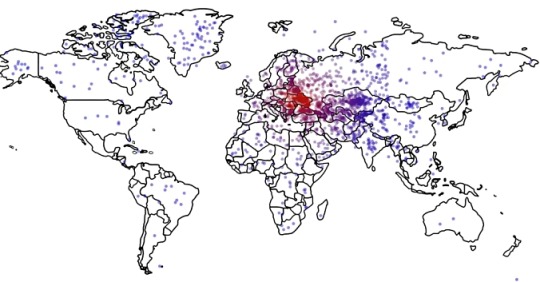
Yes, a couple of people thought Ukraine was in Memphis. Not sure what's up with those many folks who thought it is in Greenland. Maybe that's why Trump tried to buy it from Denmark.
In history in US classrooms almost nothing is mentioned about Eastern Europe that happened before the 20th century. This short list of items is typical.
A few (usually exotic) personalities like Ivan the Terrible, Vlad the Impaler, and Peter the Great.
Copernicus (real name: Mikołaj Kopernik) sorting out the Solar System. And that is actually more science than history.
The Siege of Vienna (1683). Vienna is not exactly in Eastern Europe but the siege was lifted by Polish King Jan III Sobieski.
A passing reference to Tsar Aleksandr II freeing the serfs – but only because it happened within two years of the Emancipation Proclamation.
So if you know almost nothing about the location and history of a country, you certainly won't understand its importance to international peace and security.
And that's the case with Ukraine which Putin sees simply as a piece in his country collection in his effort to restore the decrepit Soviet Union in all but name.
As Brendan Simms writes in his linked article up top...
It is worth reminding ourselves what is at stake. If Putin is not defeated and forced to withdraw from Ukraine, this will endanger much more than just the viability of that country. It will enable the Russians to reconstitute their forces facing the Baltic states and Finland, constituting a threat that we will have to face without support from Kyiv. The Ukrainians are thus fighting not only for their own sovereignty but our security as well. Their army is one of the best guarantors we have against future Russian aggression. All they ask is our help. We should give them what they need.
About those so called "red lines" we hear about from tankies and Trumpsters – those lines apparently don't really exist.
Robyn Dixon and Catherine Belton at the Washington Post write:
Ukraine’s resistance to Russia’s invasion keeps crossing President Vladimir Putin’s red lines. Kyiv’s lightning incursion into Kursk in western Russia this month slashed through the reddest line of all — a direct ground assault on Russia — yet Putin’s response has so far been strikingly passive and muted, in sharp contrast to his rhetoric earlier in the war. On day one of the invasion in February 2022, Putin warned that any country that stood in Russia’s way would face consequences “such as you have never seen in your entire history,” a threat that seemed directed at countries that might arm Ukraine. If Russia’s territorial integrity were threatened, “we will certainly use all the means at our disposal to protect Russia and our people. It’s not a bluff,” he said a few months later in September. “The citizens of Russia can be sure that the territorial integrity of our Motherland, our independence and freedom will be ensured — I emphasize this again — with all the means at our disposal,” making a clear reference to Russia’s nuclear weapons.
In other words, Putin has been bullshitting.
Ukraine’s Kursk incursion “proved the Russians are bluffing,” said Oleksandr Danylyuk, a former Ukrainian intelligence and defense official, now an associate fellow with the Royal United Services Institute, a think tank in London. “It shuts down all of the voices of the pseudo experts … the anti-escalation guys.”
Vladimir Putin can bluff only so much before people see that he's full of shit.💩 We're already past that point. His imperialist fantasies make him think that he's back in the Soviet Union and all he has to do is say something bellicose to get whatever he wants.
There are now Ukrainian troops on Russia's soil and over 133,000 refugees fanning out from the area telling other Russians of what's really going on near the border without censorship from Russian state media. The weaker Putin looks inside Russia, the sooner his invasion will end.
As I've said before, give Ukraine whatever weapons it wants – except nukes. Ukraine is doing NATO an enormous favor by keeping Putin at bay.
#invasion of ukraine#eastern europe#ukraine#kursk#former soviet union#vladimir putin#russian imperialism#russia's war of aggression#red lines#bullshit#oleksandr danylyuk#россия#курская область#агрессивная война россии#бывший ссср#владимир путин#путин хуйло#долой путина#россия проигрывает войну#путин – это лжедмитрий iv а не пётр великий#руки прочь от украины!#геть з україни#вторгнення оркостану в україну#деокупація#курсь��#олександр данилюк#слава україні!#героям слава!
36 notes
·
View notes
Note
Trick or treat! I’d love to hear about this asexual caveman project you speak of 👀
thank you!
So admittedly I am being kind of facetious calling them cavemen. The setting is 30,000 years ago in Eastern Europe or Western Asia. Gravettian culture era. And my group mostly doesn’t live in caves (Ice Age people didn’t often live in caves, at best they usually lived in shallow rockshelters, though many also resided in seasonal tents and huts.)
Atm I have my Paleolithic human group spending the winter in anachronistic but badass mammoth bone huts.
Shelters… made of mammoth bones! This was a real thing Ice Age people did!
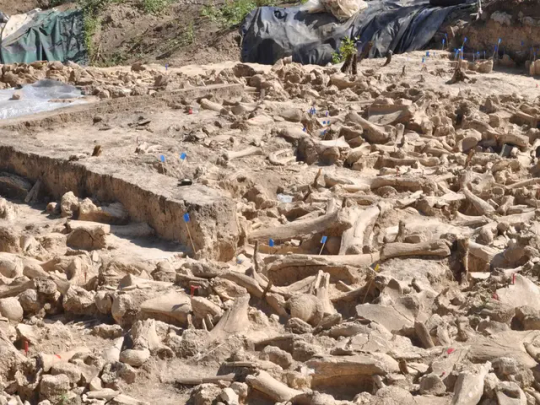
Image: an archaeological site strewn with the bones of at least 60 mammoths, which were used as the structural supports for tents or huts around 25,000 years ago. Western-ish Russia.

Image: hypothesized reconstruction of a mammoth bone hut from the site of Mezhyrich or Mezhirich, Ukraine, 15,000 years old. This shows exposed bone but it would likely have been covered in hides when it was in use.
My Ice Age protags live in mammoth bone huts in the winter because I think they’re rad. Honestly, one of my difficulties has been trying to decide on a time period setting, because I want Neanderthals (traditionally identified as going extinct 40,000 years ago, but some arguments for pockets of Neanderthals that survived up to 30,000 years ago, which I’m jumping on) but I also want mammoth bone huts (oldest known 25,000 years old, but more of them closer to 15,000 years old.) Mixing the last vestiges of surviving pockets of Neanderthals knowing they’re going extinct without really having a framework for that, and Gravettian Homo sapiens making mammoth bone huts a few thousand years early because they’re trendsetters like that. However, they’re also highly mobile, not living full-time in any location.
They do have a sacred cave for religious activities and initiations. That becomes important later. The sacred cave can also trans your gender if u want it to.
23 notes
·
View notes
Text
The Ostrogoths
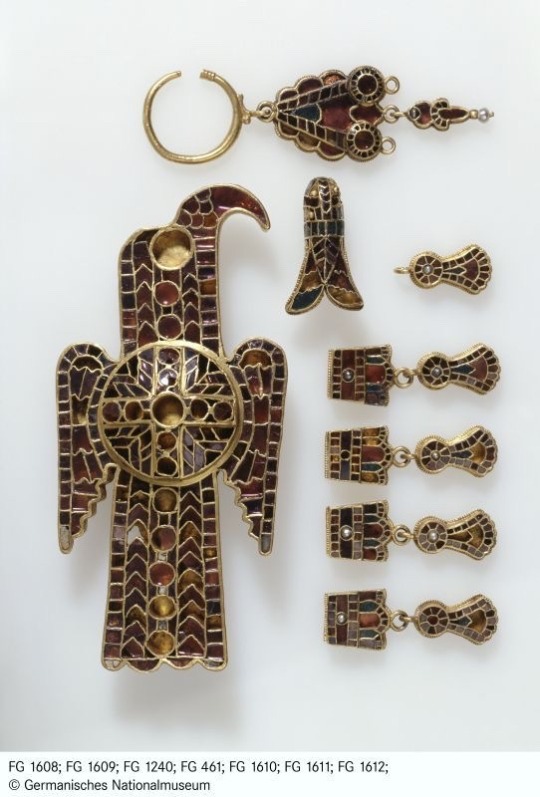
The Ostrogoths are one of two major groups which made up the Goths. The word literally means “the eastern Goths”. It is assumed that classical writers divided the Goths into east and west as a reference to where they lived, and not as tribal identity or origin story.
Archaeologically, there are plenty of similarities between the Ostrogoths and the Visigoths. For example the so-called eagle brooches (image above) are very similar. However the Ostrogoths were more generous in grave goods than their western “cousins”, with most finds being exceptionally decorated.
The earliest cultural expansion of the Goths was located in modern Ukraine. Hunnic expansion forced the goths further south to southwest into Rome. The Ostrogoths were caught between the Huns and the Romans and often switched sides. After the Hunnic empire fell, the road to Rome was open.
Theodorik entered modern day Italy with his troupes and made Ravenna the capital of his empire (instead of the city of Rome). The Western Roman empire had “fallen”, a Germanic king ruled Italia and the mythology of Theodorik was born.
Grave goods found in Cesena, Italia. 5th century.
Museum numbers: FG 1068, FG 1069, FG 1240, FG 461, FG 1610, FG 1611 & FG 1612
Germanisches Nationalmuseum, Nürenberg - Germany
#frankish#merovingian#viking archaeology#archaeology#carolingian#charlemagne#field archaeology#viking mythology#merovingian archaeology#germanic mythology#norse mythology#anglo saxon#viking#field archaeologist#frisian#odin#vikings#germanic#germanic folklore#germanic archaeology#visigoth#visigodos#ravenna#rome#western roman empire#roman empire#wodan#anglo saxon archaeology#history#jewelry
54 notes
·
View notes
Text
‘Human safari’ – Kherson civilians hunted down by Russian drones
In the ravaged city of Kherson, where Ukraine-controlled territory and Russian forces are separated by the Dnipro River instead of no man’s land between trenches in the eastern Donbas region, civilians are being targeted routinely. Terrified locals refer to the new strategy as “a human safari.”
“Drones are now flying in groups and attacking everything that moves,” said Serhii, a volunteer-turned-taxi driver. “Our charity hub had to close because trucks can no longer deliver humanitarian aid. This has not only cut off critical supplies but also crippled local businesses that rely on transportation. It’s scary to think what will happen in winter when food and fuel shortages could escalate into a full-blown crisis.”
Drone strikes averaged 100 per day in July and August 2024, he said. But as autumn set in, the numbers have spiked dramatically. Ukraine’s TSN news program reported that a record high of 330 drone strikes and 224 explosive drops hit the region on Sept. 9 alone.
To attack women buying watermelons at city corners and children playing in parks, Russian forces use modified commercial drones.
[...] “First, you see a reconnaissance drone like a Mavic,” said Svitlana, a doctor living by the river.
“Then comes an FPV (first-person view) drone, dropping a grenade on you. Or, a Coca-Cola can with explosives. Sometimes, the drone crashes and blows up. A 90-year-old woman was badly injured next door, in her yard,” she added.
Explosive Ordnance Disposal (EOD) teams respond to drone attacks in Kherson every day.
“Often, as I drive to the location, drones chase my car: they do ‘double taps,’ striking first responders and sappers,” a leading expert in the field told the Kyiv Independent on condition of anonymity citing lack of authority to speak with the media.
[...] "Russian volunteers fundraise for Mavic and FPV drones because these commercial models lack military certification and aren’t supplied by the military.”
[...] “Our Ukrainian military has intercepted Russian phone conversations. It seems that graduates of Russian drone pilot schools practice on us, using any moving target for training. They kill and injure civilians every day.”
24 notes
·
View notes
Text
Jewish State Ideas BEFORE Palestine
CRITICAL PREAMBLE: It is important to keep in mind that the idea of building a Jewish State is Zionist. It does not reflect the views of Judaism as a whole, and any antisemetic actions will result in blocking and banning. It is critical now more than ever that we recognize that there is a different. Your issues in Palestine are with ZIONISM, not Judaism. Do NOT associate them as the same. Doing so is a common Zionist tactic to make comments or opinions against Israel be rebutted that it is antisemetic purely because it comments on actions by Israel and their Zionist government and military.
Again, Zionism and Judaism are NOT one in the same, and should not be treated that way.
Anywho, timeline time!
1820 - Ararat City - Grand Island Niagara River in Western New York. Considered a precursor to Zionism as known today.
1902 - Leaugue of Eastern European States - "would entail the establishment of a buffer state (Pufferstaat) within the Jewish Pale of Settlement of Russia, composed of the former Polish provinces annexed by Russia."
Date Unsure - Herzl Plan - "The Jews who wish for a State will have it. We shall live at last as free men on our own soil, and die peacefully in our own homes." His proposed location? Cyprus 1903 - British Uganda Program - Rejected after (shocker) there were lions in Africa. Also "it was populated by a large number of Maasai people, who did not seem at all amenable to an influx of people coming from Europe." fuckin wonder why. Note that some Zionists were concerned it would "make it more difficult to establish a Jewish state in Palestine in Ottoman Syria, particularly the Mutasarrifate of Jerusalem" 1928 - Jewish Autonomous Oblast in USSR - Proposed by Russia specifcally to prevent a State of Israel AND done because it viewed Judaism as a threat to the state. "In that sense, it was also a response to two supposed threats to the Soviet state: Judaism, which ran counter to official state policy of atheism; and Zionism, the creation of the modern State of Israel, which countered Soviet views of nationalism. Yiddish, rather than Hebrew, would be the national language, and a new socialist literature and arts would replace religion as the primary expression of culture." Also included the idea of a JSR in Crimea or "part of Ukraine, however these were rejected because of fears of antagonizing non-Jews in those regions."
1940 - British Guiana - "the British Government decided that "the problem is at present too problematical to admit of the adoption of a definite policy and must be left for the decision of some future Government in years to come""
The Madagascar Plan and the Italian East Africa plans were both efforts by Nazi Germany and Fascist Italy to "solve Jewish problem" (YES THIS IS BAD). "Jews from Europe and Palestine would be resettled to the north-west Ethiopian districts of Gojjam and Begemder, along with the Beta Israel community."
1989 - Plans for the West Bank - Contemplation of a Second Jewish State - "Israeli settlers in the West Bank have mulled declaring independence as the State of Judea should Israel ever withdraw from the West Bank. In January 1989, several hundred activists met and announced their intention to create such a state in the event of Israeli withdrawal."
So yea, don't tell me about "homeland" when there were a shit ton of other ideas accepted within the Zionist ideal prior to SETTLING on Palestine. It's "homeland" cause that's where the British Empire could throw Israel. Not because they though it was the "right thing to do" or whatever thing Zionists claim now a days.
#palestine#free palestine#gaza#free gaza#israel is a terrorist state#israel#genocide#fuck the israeli government#gaza strip#idf is a terrorist group
70 notes
·
View notes
Photo

Birka
Birka, located on the island of Björkö in present-day Sweden, was an important trading center and strongly fortified town in the Viking Age which flourished from the 8th through the 10th centuries CE. Along with the town of Hedeby which is located in present-day Denmark, Birka was the most important Viking trading center in Europe. Due to its prime location on Lake Mälaren, which provided sailing access to the Baltic Sea through the Södertälje Canal, Birka attained great wealth as a mercantile settlement and entrepôt with extensive trading ties to Western Europe, Scandinavia, the Slavic and Byzantine east, as well as the Arab World. Birka was also the location where the Frankish missionary St. Ansgar (801-865 CE) first introduced the Swedes to Christianity c. 829-831 CE. UNESCO recognized Birka's importance in early medieval European history, declaring its archaeological site a World Heritage Site in 1993 CE, together with the neighboring site of Hovgården on the island of Adelsö.
Geography & Early History
Birka is located on the Swedish island of Björkö, which sits about 35 km (22 miles) to the southwest of the Viking town Sigtuna and 30 km (19 miles) west of Stockholm. In the Viking Age (c. 790-1100 CE), Lake Mälaren functioned as a bay adjacent to the Baltic Sea, and Birka was thus perfectly positioned near the northern long-distance trade routes that ran between the British Isles, Western Europe, the Kievan Rus, the Byzantine Empire, and the Abbasid Caliphate.
Although Danish and Norwegian Vikings sailed westwards towards the British Isles, Iceland, and Western Europe from the 8th-11th centuries CE, Swedish Vikings sailed eastwards, trading and raiding their neighbors in what is present-day Finland and Estonia as well as the Slavic Wends who inhabited what is now present-day eastern Germany. By the 800s CE, Swedish Vikings had managed to navigate their ships through the rivers of what is now Russia and Ukraine, penetrating as far as the Byzantine Empire and Abbasid Caliphate via the Dnieper, Don, and Volga Rivers. They brought back furs, silks, iron artifacts, and other luxury goods to Birka, which they then sold to merchants from Hedeby and Western Europe. The wealth that traversed the Baltic Sea also helped encourage Birka's founding at some point between c. 750-800 CE. As one of the earliest Viking trading hubs and one which generated (and, in turn, spread) tremendous wealth, Birka can be viewed as a catalyst for social and economic development in Scandinavia and Eastern Europe, becoming part of a larger network of trading centers which sprung up across the region.
There had been an earlier trading center on the island of Helgö, which is located about 8 km (5 miles) to Birka's southeast, and it is probable that both Helgö and the area in and around Birka became inhabited sometime around c. 400 CE. The name “Birka” might mean "marketplace" or "place of commerce", although its location on the island of Björkö ("birch island") fosters the idea of a connection with the Old Norse word bjǫrk, meaning "birch tree". It is likely that the Swedish kings who ruled from the nearby island of Adelsö – this is where the royal residence of Hovgården was located – oversaw or took some part in Birka's founding and the organization of economic activities on the island of Björkö. Birka, located in proximity to the royal court, was protected by royal charters as the town greatly enriched royal and noble coffers.
Continue reading...
34 notes
·
View notes